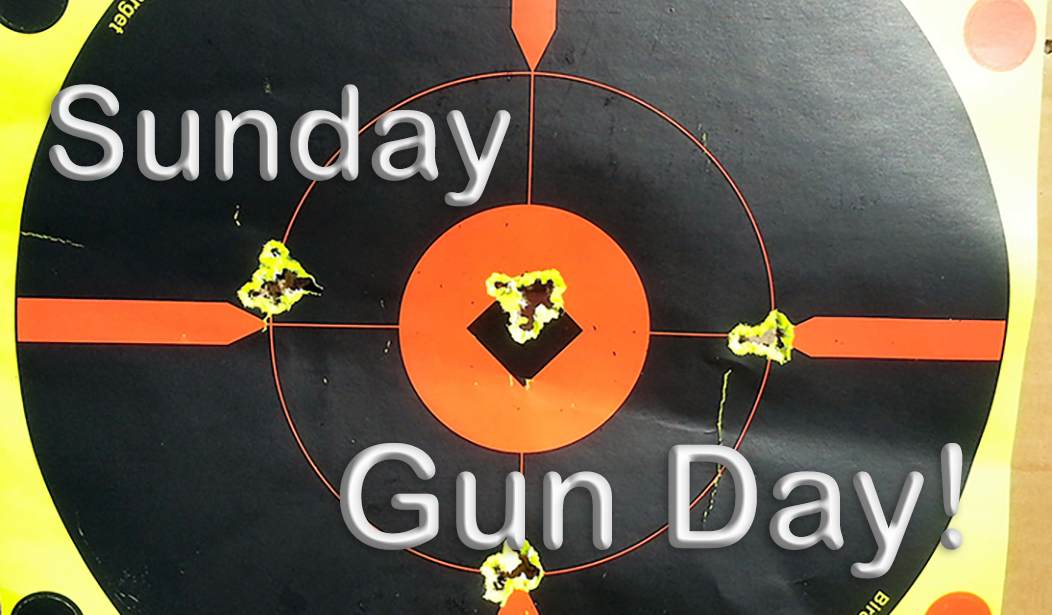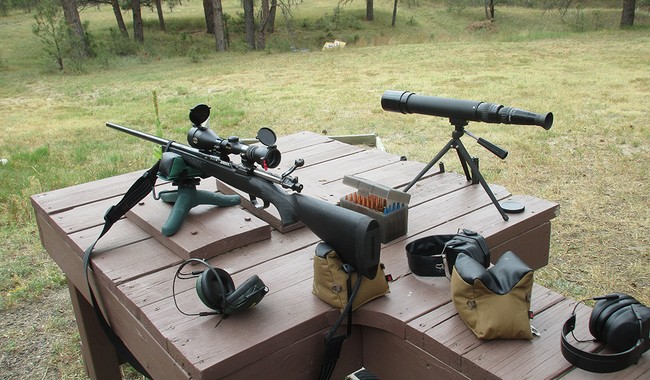The fame of the 98 Mauser action comes not only from its utility in military applications — where in its many incarnations, it is without peer among military bolt guns — but also in its ability to cross over into being a basis for a fine custom sporting rifle. Some of the greatest works of art in steel and wood to come out of the shops of fine rifle artisans are based on Mauser actions, with the 98 being the front-runner.
There are, however, several cautions and important considerations to consider when gunsmithing the Mauser action.
Pre-98 actions
One of the most important safety notes involves the pre-98 actions. Since this is a forum primarily for the 98, the pre-98s are somewhat off-topic, but the following safety tip is crucial: Pre-98 actions, including the 91 Argentine, 93-95 Spanish, and 94-96 Swede actions, lack sufficient strength to be re-barreled for most modern sporting calibers. These actions should only be re-barreled for cartridges developing a chamber pressure of 40.000 psi or less. The difference between these actions and the 98 series is not metallurgical so much as structural – an excellent illustration and text can be found in Kuhnhausen’s Shop Manual[i]. It is best to stick with the cartridges for which these arms were originally chambered.
98 Action Types
The 98 actions, in all their variations, are a somewhat different and more complicated story.
There are several different variations of the basic Model 98 action design; these can be loosely lumped into three categories. These are the large ring standard 98, which the GEW98 and k98k actions are included in; the small ring 98 actions, to include the German 98az, G33/40, and the M1910 Mexican rifles; and the large ring "intermediate" actions, typified by the Yugo vz24. Of course, thousands of minor variations exist, and addressing all those variations would be impossible in the space allowable here, so let's stick to the standard large ring 98s, including the WWII German 98k actions. For a complete description of every make, model, and variation, I recommend picking up a copy of Ludwig Olson’s Mauser Bolt Rifles, the Bible for Mauser fans.
The 98k is, as mentioned previously, a standard large ring 98 action (although some 98k pattern rifles were converted from small ring 98az carbines[ii]) and, as such, is one of the more versatile for customization. Other common examples of the standard large ring 98 include the WWI GEW98, the 1908 Brazilian contract, built by Deutsche Waffen und Munitionsfabriken (DWM); the 1909 Argentine, also built by DWM; and the M1912 Mexican, built by Waffenfabrik Steyr.
Metallurgy
The military 98 Mauser actions differ quite a bit, metallurgically, from modern sporting rifle actions.
To clarify a couple of terms, there are two manners in which a rifle receiver can fail. The first is a “yield failure,” where the receiver ring may be deformed or “ballooned”; this type of failure frequently results in escaped gas and bits of cartridge case.
The second type of action failure is an “ultimate failure,” sometimes referred to as a “catastrophic failure.” This is where the action explodes and results in chunks of receiver flying all over the place, including imbedding themselves in the shooter’s face and other vital regions.
Modern sporting actions (including the newer FN and Zastava Mausers) are made from hard, high-carbon steel and are homogenous throughout. Older military Mausers are made from softer, low-carbon steel that is heat treated or “case hardened,” resulting in a fairly soft receiver with a hard shell or “case.”
The result of this type of construction is a receiver with lower yield strength than a modern gun, but a higher ultimate strength.
What makes the large ring 98 action capable of handling higher pressures than the pre-98s is the design of the receiver ring. The large ring 98 receiver ring measures 1.41” in diameter as opposed to the pre-98s 1.3”; also, the 98 action has a longer thread-bearing surface, improved torque-bearing surfaces, and a large reinforcing web inside the receiver ring.
It is generally considered that the standard large ring 98 action is capable of handling most modern standard-length sporting cartridges.[iii] And no less a custom gunsmith than P.O. Ackley was fond of the 98 Mauser action.
Gunsmithing the 98 Mauser
Now, I'll admit that I've never based a custom sporter on a WWII 98k action — because I've never found an "action grade" gun or disembodied 98k action in a condition suitable for "sporterizing." I have, however, used a variety of Mauser actions in building custom rifles, including several standard large ring 98s.
It is somewhat sacrilegious to cut up an original collectible military rifle for customizing, and I've had a few originals in the rack at various times myself. So, I try to buy disembodied actions where I can. I will also scour gun shows, pawnshops, and estate sales for "action grade" guns — rifles that have already been modified to some extent, making them fair game for gunsmithing.
To convert the military 98 actions to a “sporter” configuration involves four basic steps: 1) reforging or replacing the military bolt handle with one that will clear a low-mounted scope; 2) installing a low-swing or side-swing safety, again to clear the scope; 3) drilling and tapping for the scope mounts themselves; and 4) restocking. Many excellent Mauser sporters have been turned out with the original barrel but given the condition of many surplus guns currently finding their way into the States, re-barreling sometimes becomes a necessity.
With a bit of luck, you can find a Mauser action or barreled action with the gunsmithing work already done.
A good example would be the rifle I built for my own use in hunting moose, bears, elk, and other large, tough critters. It is a 1908 Brazilian contract action, built by DWM, with a heavy sporter barrel chambered for the .338 Winchester Magnum. My original intent was to use one of the large ring '98 actions I had in the shop and fit a new barrel, stock, bolt handle, etc., which would have entailed no small expense. The expense of this sort of work can easily outrun the cost of a brand-spanking-new Remington 700 or Winchester 70.
In my case, fate chose to intervene at the August 1996 Tanner Gun Show in Denver, back when one could still make good deals in Colorado gun shows.
While sitting at my table, trying in vain to part with some of my surplus stuff, a gentleman walked by with a rifle slung over his shoulder, the sign on it reading: "Mauser rifle, .338 Win Mag."
Like a trout faced with a well-placed dry fly, I rose to the bait.
The rifle was the aforementioned 1908 Brazilian (large ring 98) action, with a teardrop bolt handle, Buehler safety, and Weaver bases. The 26" Douglas heavy sporter contour barrel was Mag-Na-Ported, a plus when you are talking about .338 Mag recoil levels.
Since the barreled action was already in good shape, I made a few changes after having the action inspected by my local gunsmith — I just replaced the military two-stage trigger with a Bold modular and added a Bell & Carlson Kevlar stock and a Simmons Aetec 2.5-10X scope on Redfield bases and rings, which I prefer to the Weaver design on rifles with stout recoil. I loaded up some ammo with W-W brass and 225-grain Barnes X boattails.
The first trip to the range was enlightening. Between the Mag-Na-Porting and the straight-line design of the Bell & Carlson stock, the .338 didn't seem to have any more perceived recoil than a lightweight .308. Very pleasant to shoot — I ran through all 20 rounds I had loaded before I realized it. Even more pleasant were the results at the other end of the lane: groups averaged about 1 1/4", with the largest going just over 2". The Simmons Aetec scope proved superb — very bright and clear.
Cost vs. Benefit
When the project was completed, I had a high-quality .338 Win Mag sporter with a total investment of about $500 – pretty much what I’d have paid for a new commercial gun in 1996 without the scope, dies, or accessories.
Thunder Speaker is a pretty good example of the kind of “custom” work that any reasonably capable gun crank can do by him or herself – no re-barreling or action modification involved, as that work was already done. These kinds of project guns are readily available, often at bargain prices. I’ve since spent a little bit more to have a Winchester-style side-swing safety mounted, as the Buehler was too close to the scope objective when set to Safe.
Cost isn’t all that the true gun crank considers, however, and the chance to take game or gather oohs and aahs at the range with a unique sporting arm of one’s own making will often outweigh mere financial concerns. I know it does for me.
Inspecting the 98 actions
When considering an action for extensive gunsmithing, the prospective custom Waffenmeister should inspect the following areas closely:
- The bolt face should be clean and free of pitting and erosion.
- The extractor should fit tightly and function correctly with a dummy cartridge of the appropriate caliber.
- The locking lugs should be clean, rust-free, and show minimal wear.
- Cocking piece/sear engagement should function smoothly and flawlessly – ditto for the safety.
- The ejector box should have good spring tension and function freely.
- If the original barrel is to be used, the bore should be clean and free of rust and pitting.
- Visually inspect the entire action for rust and/or pitting. I’ve seen a few actions for sale that were pitted badly enough to be potentially dangerous.
- If the action has been drilled and tapped for scope mounts, ensure the screw holes are not in the area of the barrel threads or reinforcing web.
The action should also pass the following standard function check:
- Close the bolt and apply the safety.
- Pull the trigger. Nothing should happen.
- Without operating the bolt, turn safety to “fire.” The sear should remain engaged. If the striker falls when the safety is disengaged, you have a serious safety problem.
- If the sear remains properly engaged in Step 3, pull the trigger. The striker should fall normally. The trigger pull should not be gritty or stiff.
If the action passes all these tests, it should be a good candidate for your custom project.
Gunsmithing Do’s and Don’ts
Do’s:
- Have your action or barreled action inspected by a professional gunsmith prior to any customizing. If you are using the barrel already on the gun, the inspection should include head spacing.
- When rebarreling, invest in a quality barrel. The barrel is the heart of a rifle, and a quality tube from Shaw or Douglas will be worth the extra bucks.
- True action and bolt faces and lap locking lugs. This process evens bearing surfaces and improves inherent accuracy.
- Use an aftermarket modular trigger if desired. I’ve had excellent results from Timney, Bold, and Dayton Traister triggers. Keplinger makes a very good single-set trigger for the 98 Mauser, which does require professional installation.
Don’t:
- Open the feed ramp to allow feeding of .300/.375 H&H or full-length magnum cartridges. This removes metal from the area immediately behind the lower locking lug – not a good practice.[iv]
- Trust chamber stamps on used guns. A Cerrosafe chamber mold should be done on any and all used guns.
- Fire any rifle with an improperly functioning safety mechanism.
- Fire any 7.9x57mm Mauser manufactured prior to 1905 without first miking the barrel. A few J-bore (.311) guns are still extant – and may generate dangerous pressures if fired with S-bore (.323) cartridges.
And finally – please – don’t cut up or modify an original collectible! There are ample action-grade guns around and ample collectors who will be willing to take your original off your hands.
The 21st Century Mauser
It’s often said, “The more things change, the more they stay the same,” and this certainly applies to rifle design – given Winchester’s and other gunmakers run back to the original controlled feed design of the 98 Mauser. Paul Mauser’s M98 has set the standard by which all other bolt action rifles are measured for 120 years now. I’m confident that it will continue to be the gold standard of bolt guns well into this century.
[i] “The Mauser M91 Through M98 Bolt Actions – A Shop Manual.” Kuhnhausen, Jerry, 1991, VSP Publishers, pg. 160
[ii] “Mauser Bolt Rifles” Olson, Ludwig, 1976, F. Brownell & Son, pg. 118
[iii] Kuhnhausen, pg. 86
[iv] Ibid., pg. 86.















